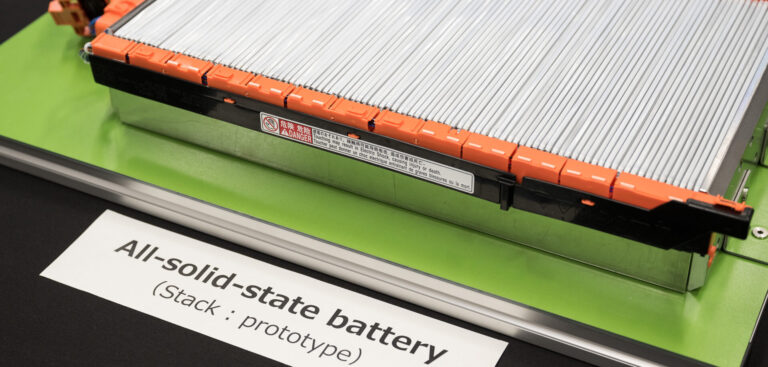Toyota has outlined its future powertrain development activities, encompassing both BEV, hybrid and ICE technologies, under the banner ‘Lets’ change the future of cars’.
In the near term, the company aims to release a next-generation BEV in 2026, featuring a ‘square’ lithium-ion battery (‘performance’ version) and with a target cruising range of 1,000km, achieved through an increase in battery energy density and vehicle efficiency (via aerodynamics and weight reduction).
Toyota is also looking to deploy its bipolar LFP batteries – currently used in its Aqua and Crown hybrids – in BEVs in 2026-2027, with a goal of a 20% increase in cruising range and a 40% reduction in cost compared to the current bZ4X. These batteries will be based around cells with a new structure, the company says. A high-performance bipolar battery using a high nickel cathode within a prismatic cell, giving 10% greater range at a 10% cost reduction over the current next-gen battery, is also planned for launch in 2027-2028.
![]() One of the headline announcements is the Toyota’s progress on the deployment solid-state batteries, with the company targeting commercialization by 2027-2028. “Having discovered a technological breakthrough that overcomes the longstanding challenge of battery durability, the company is reviewing its introduction for conventional HEVs and accelerating development as a battery for BEVs,” Toyota said.
One of the headline announcements is the Toyota’s progress on the deployment solid-state batteries, with the company targeting commercialization by 2027-2028. “Having discovered a technological breakthrough that overcomes the longstanding challenge of battery durability, the company is reviewing its introduction for conventional HEVs and accelerating development as a battery for BEVs,” Toyota said.
The company hopes for an improvement in cruising range of 20% over its latest liquid lithium-ion batteries (the ‘performance’ version square battery), with a quick charge capability of 10 minutes from 10-80%. Research on a higher performance version with a 50% improvement in range is also underway.
![]()
Downsizing
Also described in Toyota’s roadmap is the development of a ‘small e-axle’. This will be co-developed with BluE Nexus, Aisin, Denso and Toyota, with the goal that a smaller, more power-dense axle will help increase range and interior space. This will go hand in hand with advancements in SiC wafer production, including the introduction of a ‘gas method’ which enables crystal growth 10 times faster than current industry standards. Toyota is also developing a large, 8in wafer, which will give the company internal technological expertise in SiC manufacturing.
Hydrogen
In addition to its BEV activities, Toyota will continue to pursue diverse powertrain options covering hydrogen fuel cells and ICE, and will establish a new organization, the Hydrogen Factory, which will be able to “make immediate decisions under one leader, from sales to development and production, all at once”.
Toyota’s next-generation fuel cell system will look to increase service life, reduce costs and reduce fuel consumption. Toyota states that it is “pursuing easier maintenance requirements compared to diesel-engine vehicles and to reduce the cost of a fuel cell stack by half, compared to current models”. It also expects to improve the cruising range by 20%.”
Development of Toyota’s H2 ICE projects will also continue, including the application of NOx-reduction techniques currently deployed in diesel vehicles. It is also examining the application of e-fuels for markets where H2 is expensive to produce.


